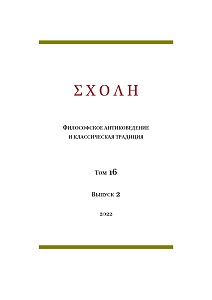К вопросу о «теологии» обитателей Хирбет-Кейафы
On the “theology” of the inhabitants of Khirbet Qeiyafa
Author(s): Igor TantlevskijSubject(s): Archaeology, Ancient World, History of Judaism, Biblical studies, Sociology of Religion
Published by: Новосибирский государственный университет
Keywords: Khirbet Qeiyafa; theophoric names; theology; Judaism; epigraphy; Ba‘al; Ba‘alism; Judah; King David;
Summary/Abstract: The excavations at the site of Khirbet Qeiyafa, the results of which have been published in recent years, shed new light on the formation of Judah’s state structure and the united Kingdom of Israel under David (or perhaps even a miniempire) as a whole. The artifacts found here testify to a powerful and well-organized state structure formed during the time of King David, with all the basic attributes inherent in it, as the Bible tells us. The author of the article pays special attention to the interpretation of the name ’Išba‘al (literally “man of Ba‘al”; alternative vocalization and interpretation: ’Ašba‘al, i.e., “Ba‘al gave”), attested in one inscription written from right to left in Canaanite script on a ceramic shard from a vessel from Khirbet Qeiyafa (the turn of the 11–10th centuries BCE), in a broad theological context. The author admits that in theophoric Judahite and Israelite names attested both in the Bible and in epigraphy — including the inscription from Khirbet Qeiyafa — of the period of Judges and the united Kingdom of Israel (at least under Saul and David) the component Ba‘al, literally “Lord,” was used to refer to the God of Israel, not to a Semitic pagan deity. It also implicitly suggests that already at the dawn of Jewish history, pious people sought to avoid pronouncing the Name of God, the Tetragrammaton, “in vain”.
Journal: ΣΧΟΛΗ. Философское антиковедение и классическая традиция
- Issue Year: XVI/2022
- Issue No: 2
- Page Range: 706-730
- Page Count: 25
- Language: Russian

